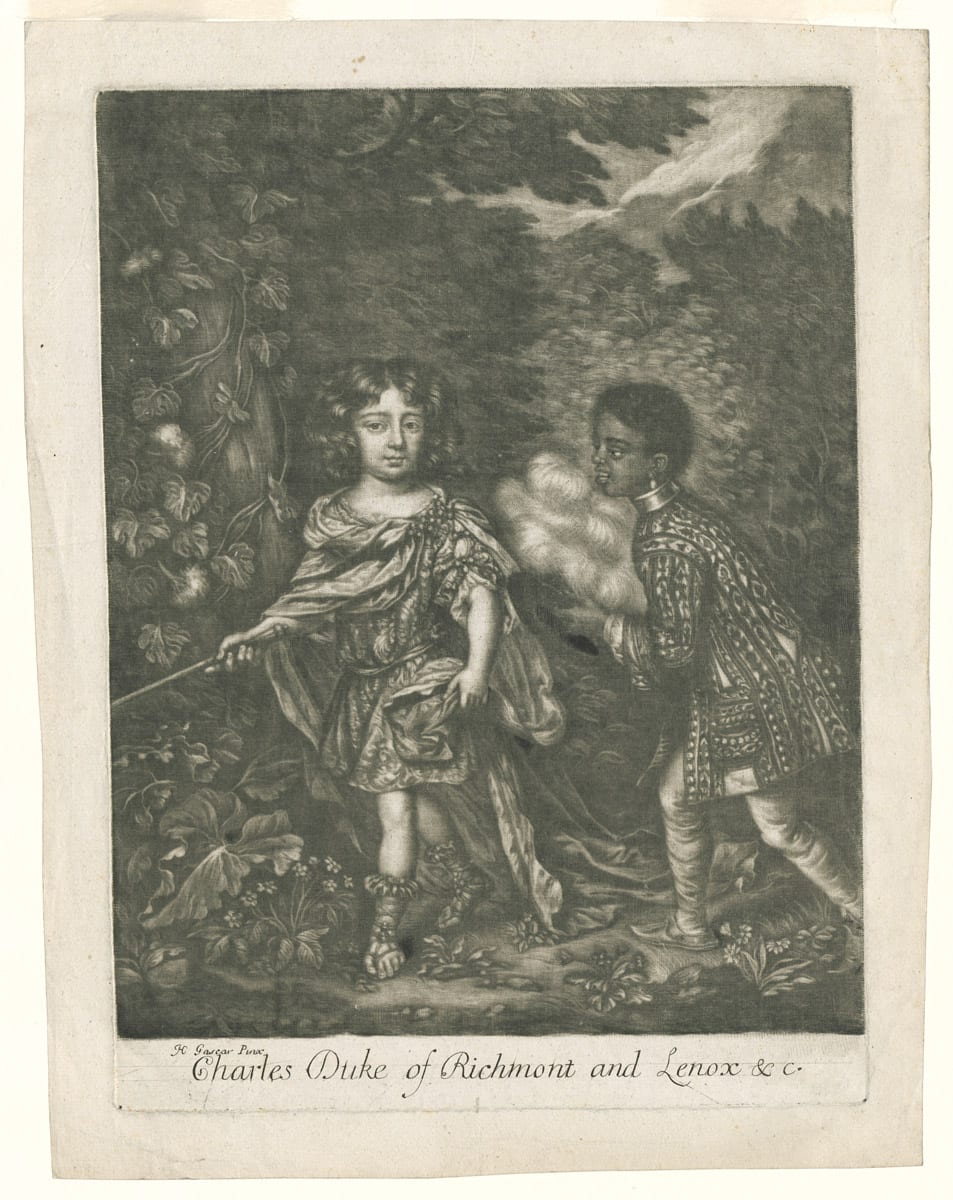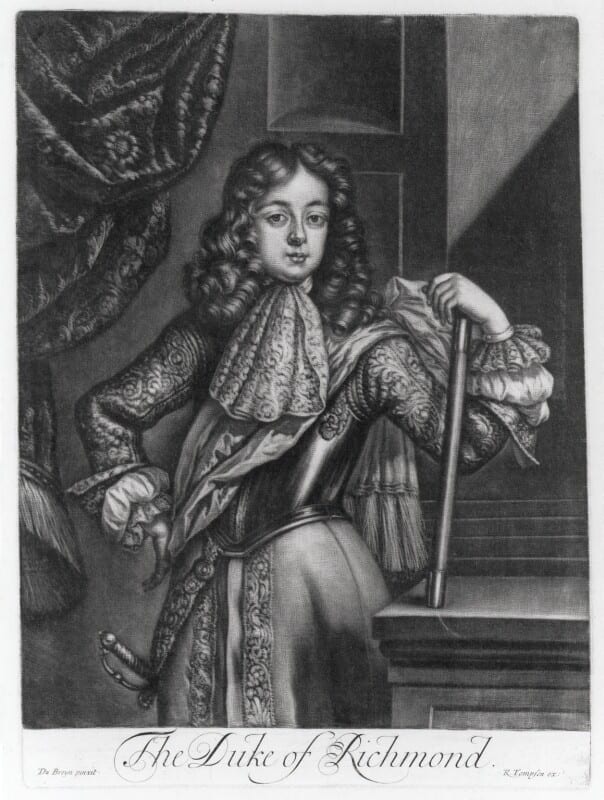Creating the First Duke of Richmond . . . with Mezzotint
By Joseph Litts, WPAMC Class of 2020
The dense tangle of vines and leaves jumped out of the page, echoing the jungle-like humidity (at least compared with Southern California) I felt outside my new home in Wilmington. There is very much a sense of arrested motion in the cropped legs, trees, and accoutrements. The more I looked at this print in Winterthur’s collection, the more intrigued I became by what I saw; the more I thought I knew about the print, the less—I quickly realized—I actually knew. Fortunately, I had an artist, Henri Gascar, and one of the sitters, Charles, Duke of Richmond, identified in the inscription.

Fig. 1, After Henri Gascar, Charles, Duke of Richmont, 1675–80. Mezzotint with drypoint. Winterthur Museum; acc. no. 1965.2602. Courtesy, Winterthur Museum.
I began my research by closely looking at the materiality of the print. The image is mainly mezzotint, a printmaking technique perfected in Italy in the mid-seventeenth century. In this process, the entire printing plate is texturized, and highlights are created by rubbing the plate. Achieving dark shadows can be difficult.[1] There are areas in this image where the smooth tonal gradient is interrupted by harsh, scratchy lines. Examined under magnification, it became clear these were areas of engraving, done to selectively darken the shadows. The British Museum’s copy of this print (the only other copy I could find) also has these areas, indicating multiple copies were made this way.[2]

Detail of print, showing areas of engraving in context with the mezzotint ground. Photograph by author at 10x magnification.
The foliage is darker around Charles and lighter around the black man (whose name is lost), drawing attention to the differences between the two sitters. Owning and/or employing black servants was both fashionable and expensive in the period.[1] Much of my earlier research has been on the many various ways Europeans could collect the New World, so my immediate response was that this was an image demonstrating Charles’s ownership of another non-European human, and therefore his power.
Frequently, but not always, these prints were copies of slightly earlier paintings. I was (very) happy to uncover the likely source for the print in the collection of the National Trust. Painter Henri Gascar (who did the portrait and whose name is below the print) was in England from 1674 to 1680, which gave me a more concise date for the print than the previous “17th century”![2] The painting is reversed horizontally from the print, which is not uncommon, but the addition of the enslaved man and the change in background suggest a public image campaign.

Henri Gascar, Charles Lennox, ca. 1676. Oil on canvas. National Trust; acc. no. 227687. Used under CAA guidelines for fair use.
The print would have circulated more widely than the painting, and the print more clearly illustrates Charles’ power and wealth. Charles was born in 1672 as the illegitimate son of King Charles II of England and became one of the more powerful people in England 3 years later, when he was named Duke of Richmond and Lennox (yes, when he was 3).[1] This mezzotint is one of several print images I’ve found of the young Duke. Such a profusion of print culture around him certainly makes sense as an attempt to legitimize his position in the nobility.

An example of another image of the young Duke. After Cornelis de Bruyn, Charles Lennox, 1st Duke of Richmond and Lennox, 1678–79. Mezzotint. National Portrait Gallery; acc. no. D20041. Image ® National Portrait Gallery, London. Used under CAA fair use guidelines.
But, once again with this print, there are still more questions: Who made the plate itself? Who was commissioning and consuming all of these prints of the Duke? Who is the enslaved person (if he’s an actual person rather than a stock figure, which was sadly common)? Why were there so many changes between the painting and the print? Hopefully, as autumn progresses, I’ll be able to answer these, while probably finding more to ask!
[1] Oxford National Dictionary of Biography, s.v. “Lennox, Charles, first duke of Richmond, first duke of Lennox, and duke of Aubigny in the French nobility” by Timothy J. McCann, last modified 24 May 2008, https://doi-org.udel.idm.oclc.org/10.1093/ref:odnb/16449
[1] Giles Waterfield, Anne French, and Matthew Craske, Below Stairs: 400 Years of Servants’ Portraits, exhibition catalog (London: National Portrait Gallery, 2003) 139–46.
[2] Grove Art Online, s.v. “Gascar (Gascard; Gascars), Henri,” by D. Brême, accessed 24 August 2018.
[1] Bamber Gascoigne, How to Identify Prints (New York: Thames & Hudson, 1986) section 16b.
[2] British Museum acc. no. 1864,0813.183.

Leave a Reply